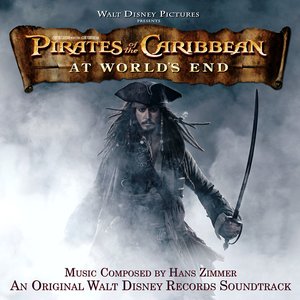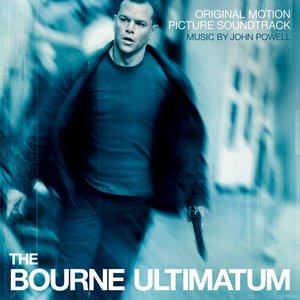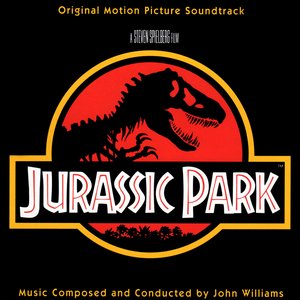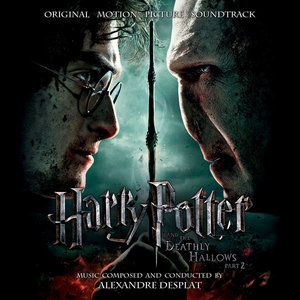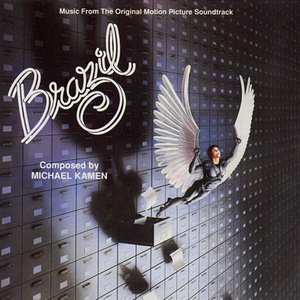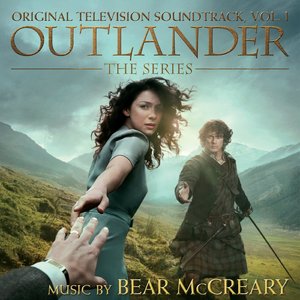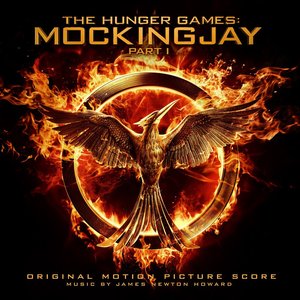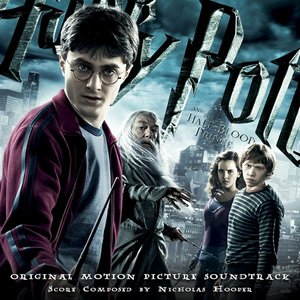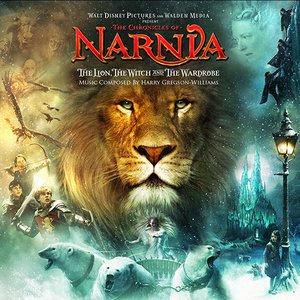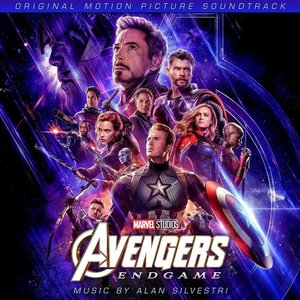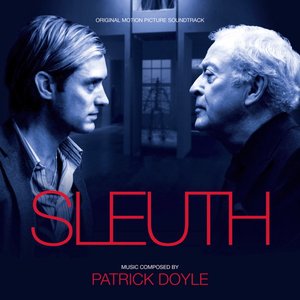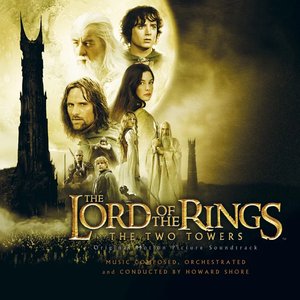Wiki
PERFORMERS
VOCALISTS
Returning:
THE LONDON ORATORY SCHOOL SCHOLA
Listening Example: Disc One | Track One| 2:53
The London Oratory School Schola was established in 1996 as the top boys chorus at the prestigious London Oratory School. The Schola sings as part of the school’s weekly Mass services and has appeared in numerous film scores including Danny Elfman’s Sleepy Hollow, John Williams’ Harry Potter scores, and of course, Howard Shore’s The Lord of the Rings. Although used throughout the scores, the boys become very closely associated with the forces of Nature and Shore’s Seduction of the Ring theme.
Returning:
THE LONDON VOICES
Listening Example: Disc One | Track Twelve| 0:00
The singers of The London Voices are hand picked for each engagement they attend. The choir has no fixed membership so that singers who excel at specific styles can be assigned the ideal projects. Under the direction of Terry Edwards, London Voices have performed a wide array of film and concert works around the globe, including standard repertoire of Bach, Handel, Mozart, Stravinsky and newer works by John Adams, Luciano Berio and Sir Michael Tippett.
Terry Edwards recalls, “My memories of the sessions are pretty vivid as I conducted all of the choral ones for the second and third films. Howard was very involved in composing new and/or changing material. We tended to record material to play him down the line during the first hour of each session. He had an unfailing ability to pick out any imperfections if there were any, and to suggest subtle changes to our performance or to his composition which would affect, in a magical way, what was heard so that it more closely matched the visions on the screen. I was considerably impressed with his ability to transfer his thoughts from his composition to our performance so that he would give us one hundred percent of his concentration when we needed it, despite the other pressures and events that must have been overwhelming him at that time.”
Debuting:
RENÉE FLEMING
Listening Example: Disc One | Track Twelve| 0:00
Renée Fleming is one of the most renowned and respected operatic sopranos of modern times. In her wide-reaching career she has championed jazz standards and both traditional and modern opera, premiering works for John Corigliano (The Ghosts of Versailles) and André Previn (A Streetcar Named Desire).
Debuting:
SIR JAMES GALWAY
Listening Example: Disc One | Track One | 0:49
Sir James Galway served as principal flute of the Berlin Philharmonic Orchestra under Herbert von Karajan from 1969 to 1975, at which point he embarked on a successful career as a solo artist. Рis appearance in The Return of the King represents the maturation of the hobbits’ folk instruments as the whistles associated with their culture gradually give way to the more complex nuanced sounds of the classical flute. Galway performs on a solid gold flute, which he had custom built.
Debuting:
ANNIE LENNOX
Listening Example: Disc Four | Track Seven | 0:52
Annie Lennox has had a wide and varied career as a performer, though her work as a solo artist and as a member of the band Eurythmics is perhaps most recognized by the public. She sings “Into the West” at the end of The Return of the King, a role Howard Shore thought she was musically appropriate for, given her interpretive skills and resemblance to the character Galadriel.
Debuting:
SISSEL
Listening Example: Disc Three | Track Thirteen | 3:15
Sissel took a circuitous route into the music of Middle-earth. She was originally engaged to perform the solo soprano part in select performances of The Lord of the Rings Symphony: Six Movements for Orchestra and Chorus, then was subsequently asked to perform “Asëa Aranion” for the Extended DVD Edition of The Return of the King.
BEN DEL MAESTRO
Listening Example: Disc Two | Track One| 7:50
A member of the London Oratory School Schola, Ben Del Maestro sings all the boy soprano solos in The Return of the King.
CAST PERFORMERS
BILLY BOYD
DOMINIC MONAGHAN
VIGGO MORTENSEN
LIV TYLER
INSTRUMENTALISTS
LONDON PHILHARMONIC ORCHESTRA
Howard Shore’s relationship with the London Philharmonic Orchestra dates back to 1986 and his score to The Fly. Today that relationship has blossomed into a gratifyingly personal one, both for composer and orchestra. “I love them because they’re a concert orchestra, but they’re very much a great opera orchestra. They’ve been playing Glyndebourne every summer for about 30 years. Being in a pit accompanying opera is so much like what i’m trying to do with film music, and they understand that well. That’s the perfect combination for film music, so it seemed obvious that they should do The Lord of the Rings. The LPO has fantastic instrumentalists. I know them so well. I know Sue Bohling, the cor anglais player, and how great she will sound playing a particular piece. I know Paul Beniston, the first trumpet player, and the first flute player and principal violin. I’ve absorbed, from working with them so many years, their beautiful sounds.” Sue Bohling returns the compliment. “The first film i worked on with Shore was The Yards, which I remember as if it were yesterday. There was a lot to do and it had the most beautiful title melody… for cor anglais! It’s always a thrill to play someone’s composition when they know how to write for the instrument. He has a natural feel for what the c.a. does best. He writes with such a lyrical quality, and in the right range of the instrument for it to sing.”
Principal cellist Bob Truman echoes this praise for detail. “A lot of thought has gone into it. All his music is very well written. He understands the nature of the instruments and, from my perspective as a cellist, he writes very, very well. It’s all in singing registers. He understands harmonics and things like that. He uses tone clusters where we all play different rhythms and they’re fascinating. It’s very interesting the way he writes strange sequences of clusters and then has a melody that fits in.” Concertmaster Pieter Schoeman continues, “Howard would write the most complex divisis. He creates a cluster of sound where all the violins start on the same note and then start dividing, spreading into a chord and finally forming a cluster so thick you would need a chainsaw to cut through it. The Concertmaster has to organize this kind of divisi in such a way that you have an equal numbers of violins on each note as the chord spreads. I finally worked out a certain method, which we ended up using systematically since we needed it quite often. We still affectionately refer to this technique as the ‘Howard Divisi.’”
Although LPO is primarily a concert hall orchestra, they’ve played for a great number of film scores. Still, Stewart McIlwham, LPO’s Principal Piccolo, will always remember the orchestra’s participation in this monumental production. “The Lord of the Rings project is probably the biggest film score that the LPO will ever take part in. Just in the sheer numbers—in the three films, plus the extra DVD music you are getting close to 200 three-hour sessions. Having worked with John Williams on Star Wars: The Phantom Menace it was interesting to compare how Howard Shore approached the creation of this score. With Williams all the music was completed, orchestrated and ready to be put down in a relatively short time. With The Lord of the Rings, director Peter Jackson was on hand at most of the sessions, so he and Howard worked in a totally different way. We would record at a four or five minute piece, then they would listen to it with the movie. Sometimes we would spend the rest of the session subtly refining just this one cue. Howard would change the orchestration, adding a different instrument here, sometimes removing a whole violin section there.
“But we were taking part in one of the greatest movie projects ever. I some times wondered if the people of Watford (where the scores were largely recorded) ever knew what was going on at the end of their high street, or if they would have believed you had you told them! Sometimes on those long days it wasn’t so easy to see that because the process could be slow, but between Peter Jackson and Howard Shore they created a masterpiece. That is the genius of the two men.”
Principal trumpet Paul Beniston continues, “The Lord of the Rings project totally dwarfed any other film project I have been involved in, or indeed heard of and I have been in the LPO for almost 10 years.” Bohling sums up the orchestra’s feeling towards composer and project. “He’s a bit of a master, isn’t he? There’s nothing like this, and there won’t be anything. The score was like going on a long journey, like playing one long phrase. Howard’s writing is very clear, we know what he wants and where he wants to take it and he knows what we can do.”
DERMOT CREHAN
Hardanger Fiddle, Double Fiddle
EDWARD CERVENKA
Cimbalom
SYLVIA HALLETT
Sarangi
Sylvia Hallett is a multi-instrumentalist, composer and improviser who plays, from time to time, in international festivals. She has worked extensively for theatre and has toured the world with the RSC and Young Vic Company. She has been playing the sarangi for eight years, studying Indian music with Nicolas Magriel.
JAN HENDRICKSE
Rhaita, Low Whistle
ULRICH HERKENHOFF
Pan Flute
EDWARD HESSION
Musette
JEAN KELLY
Celtic Harp
GREG KNOWLES
Cimbalom
“I came to London from preston in 1978-85 to work for Sir Peter Maxwell Davies’ contemporary chamber group, The Fires of London. I became involved in the London studio scene as percussionist and composer working on movie scores (Spy Game, Red Violin) and recording with artists as diverse as Nigel Kennedy and Primal Scream.”
STUART MCILWHAM
Wood Flute
JOHN PARRICELLI
Six-String Guitar, Twelve-String Guitar
SONIA SLANY
Monochord
GILLIAN TINGAY
Celtic Harp
“For the recording of the DVD, I had been asked to bring a clàrsach —the rather temperamental Gaelic harp—instead of the six-foot tall concert harp that I normally use. I arrived at the studio expecting to be playing with my usual session orchestra but instead was asked to take myself and my little harp into a rather compact recording box where I was joined by the other musicians. Fortunately, they were not an orchestra but five very jovial and talkative Irishmen. Besides being brilliant musicians, they were very witty and so the time that I spent cooped up in a confined space with the five of them was not only a unique musical experience, but also great fun!”
MIKE TAYLOR
Whistle
As a member of the world music combo, Incantation, Mike Taylor has performed on film scores such as Ennio Morricone’s The Mission, James Horner’s Willow and Howard Shore’s Gangs of New York. Taylor fondly remembers Shore’s never-ending quest to find the perfect musical voice for Middle-earth when, during the recording sessions, the composer turned to him and asked, “’Mike, do you think the hobbits actually played whistles?’ I replied, ‘Howard, what do you think?’ He replied, ‘Probably, but never mind. Just play the tune and make me weep!’”
ROBERT WHITE
Bodhrán
INSTRUMENTS
HOBBITON
Returning:
BODHRÁN
Listening Example: Disc Four | Track Four| 8:40
The bodhrán (Bough-rawn) is just one of an ancient family of frame drums that consist of a stretched hide over a wooden shell. Bodhrán drums are believed to have originated in Ireland (or possibly emigrated there via the Roman Empire or Arabic trade routes), and derived their name from a Gaelic description of the sound, roughly translated as “thundered.” With the hobbits of the Fellowship dispersed around Middle-earth, the bodhrán is no longer restricted to the Shire—or even the hobbits. It appears throughout the score now as a cosmopolitan element of the world.
Returning / Debuting:
WHISTLE / LOW WHISTLE
Listening Example: Disc One | Track Three| 1:32
The Irish whistle (also known as the penny whistle, vertical flute, flagolet, stáin or feadóg) may be the oldest instrument in Celtic music. Originally carved from bone, today’s whistles are generally made of wood or metal.
Returning:
DULCIMER
Listening Example: Disc Four| Track Four| 9:41
Returning:
CELTIC HARP
Listening Example: Disc Four| Track Four| 9:41
Returning:
MUSETTE
Listening Example: Disc Four| Track Four| 9:41
Returning:
MANDOLIN
Listening Example: Disc Four| Track Four| 9:41
Returning:
GUITAR
Listening Example: Disc Four | Track Seven| 0:41
Returning:
CELESTA
Listening Example: Disc Four | Track Four | 9:41
GOLLUM
CIMBALOM
Listening Example: Disc One | Track Eight| 0:00
Just as Gollum was once nearly a hobbit, the cimbalom was once nearly a standard hammered dulcimer. Developed in the Nineteenth Century, the cimbalom is an elaborate Hungarian variant on the dulcimer—with nearly twice the range and a chromatic tuning. Like the dulcimer, the strings of the cimbalom are struck with small hammers that create a tactile, twitchy sound that matches the character of Gollum’s Menace theme.
THE ELVES
Returning:
MONOCHORD
Listening Example: Disc Two| Track Thirteen | 8:20
The monochord’s history is as mysterious as its many uses. The instrument itself consists of a large wooden box over which a single string is held in place by pegs. An adjustable bridge allows the monochord to shift pitch while the performer either plucks or bows the string. Monochords have been used as scientific instruments (Pythagoras used its harmonic vibrations to study ratios), astronomy (Ptolemy), philosophy (Kepler’s “Harmony of the Spheres”), musical teachings (Guido of Arezzo’s “Guidonian Hand”), and for the curative properties of its vibrations. In Middle-earth, our mystical monochord is used for the Elves of Lothlórien, where it provides a low droning melancholy over which the melody flows. The monochord used for this recording had 50 strings strung across the bridge.
Returning:
SARANGI
Listening Example: Disc Two| Track Thirteen | 8:20
The sarangi, a bowed string instrument common to Indian classical music, is constructed from a single block of wood, covered in parchment and generally strung with three or four gut strings under which 35 to 40 resonating strings run.
GONDOR
Pan flute and wood flute were each used to represent Gondor in Middle-earth because of their storied histories in the real world. These wind instruments constitute some of the earliest musical devices on record, and so Shore transplanted them to Middle-earth to represent Gondor, the most ancient and revered kingdom of Men. Here the pan flute represents Faramir’s sensitivity and suffering while the wood flute introduces his developing relationship with Éowyn.
Debuting:
PAN FLUTE
Listening Example: Disc Two | Track Three| 2:20
Debuting:
WOOD FLUTE
Listening Example: Disc Three | Track Thirteen | 1:06
ROHAN
J.R.R. Tolkien based Rohan’s society on the Northern European lands of the Nordic peoples. These cultures (both Middle- and real earth) were founded upon simple ideals: the relationship between men and the land, men and animals, pride, power, self-reliance. Reflecting these values, Shore set the music of Rohan in the same thickset brass style as the other music for the World of Men, but intermixed with solo strings that stress a rural type of sophistication.
Returning:
HARDANGER FIDDLE
Listening Example: Disc One | Track Five | 1:02
Although the composer was previously aware of many of the rare instruments in The Lord of the Rings’ collection, Shore had never come across the Hardanger fiddle before he began studying Nordic music as a basis for Rohan. “It was part of the research for The Two Towers, looking towards Northern European sounds and thinking about the Viking, Nordic culture.” Often referred to as the national instrument of Norway, the Hardanger fiddle was thought to have been invented in the mid 1600s. The tone is bracing and emphatic, but moderate at the same time. In Norwegian culture the instrument was used to relate history and lore, and it functions much the same in the music of Rohan. “The fiddle creates a nice counterpoint to the wooden flutes and the whistle in the other cultures.” When the Rohan culture is introduced, it is proud but sorrowful—a once great civilization beset by a failing king and unending assaults. Here the Hardanger underlines a brittleness within the culture.
Debuting:
DOUBLE FIDDLE
Listening Example: Disc Two | Track Eight| 0:40
The double fiddle was specifically created for the score to The Return of the King. The instrument, which essentially doubles the standard fiddle’s four strings into four pairs of strings (eight total), is used when Aragorn tells Éowyn that there will never be love between them, and was performed by Dermot Crehan. “A friend of mine’s a fiddle maker, Bob Greenbridge,” Crehan recalls. “I came up with the idea and said, ‘Please do this for me. I think it might work—and it might be a disaster.’ He said, ‘You must be absolutely mad.’ I said, ‘Yes, I am!’”
THE ORCS
Returning:
TAIKO DRUM
Listening Example: Disc Three| Track One| 0:23
These ancient drums, which have been used in Japanese music for over a millennium, exist in four basic sizes. The rich, rumbling tone of the drum was associated with the power of the gods in traditional Japanese culture, and the drum was used on the battlefield to strike fear into the hearts of enemies. It serves much the same purpose in the music of the Orcs where its pounding, unforgiving tone represents their brutal force.
MORDOR
Returning:
RHAITA
Listening Example: Disc One | Track Ten | 1:09
A long time fan of Ornette Coleman, Shore discovered the rhaita on the innovative saxophonist’s 1973 album, Dancing in Your Head. The rhaita, an African double reed instrument not unlike the oboe, represents the cultures of Mordor in The Lord of the Rings. It is especially associated with the Evil of the Ring theme, which it calls out like a twisted war horn.
THE ARMY OF THE DEAD
Debuting:
HANGING TIBETAN GONGS
Listening Example: Disc Two| Track Eleven | 1:11
A large assortment of these hanging metal plates represents the muted clang of long-ago war behind the ghostly men’s chorus of the Army of the dead. Though the gong is now a common member of the percussion family, it was first introduced to the orchestra by composer, François Joseph Gossec, who used it, appropriately enough, in a funeral march.
SPECIAL CREDITS
PLAN 9 (Janet Roddick, David Donaldson, Stephen Roche and David Long)
Plan 9 first collaborated with Peter Jackson on 1995’s Forgotten Silver. In The Lord of the Rings films, they specialized in diegetic, or on-screen music, including Merry and Pippin’s ode to “The Green Dragon.”
Additional information available in the complete book The Music of the Lord of the Rings Films.
Original text Copyright © 2007 by Doug Adams
© The Annotated Score (The Music of The Lord of the Rings Films)
Album descriptions on Last.fm are editable by everyone. Feel free to contribute!
All user-contributed text on this page is available under the Creative Commons Attribution-ShareAlike License; additional terms may apply.

